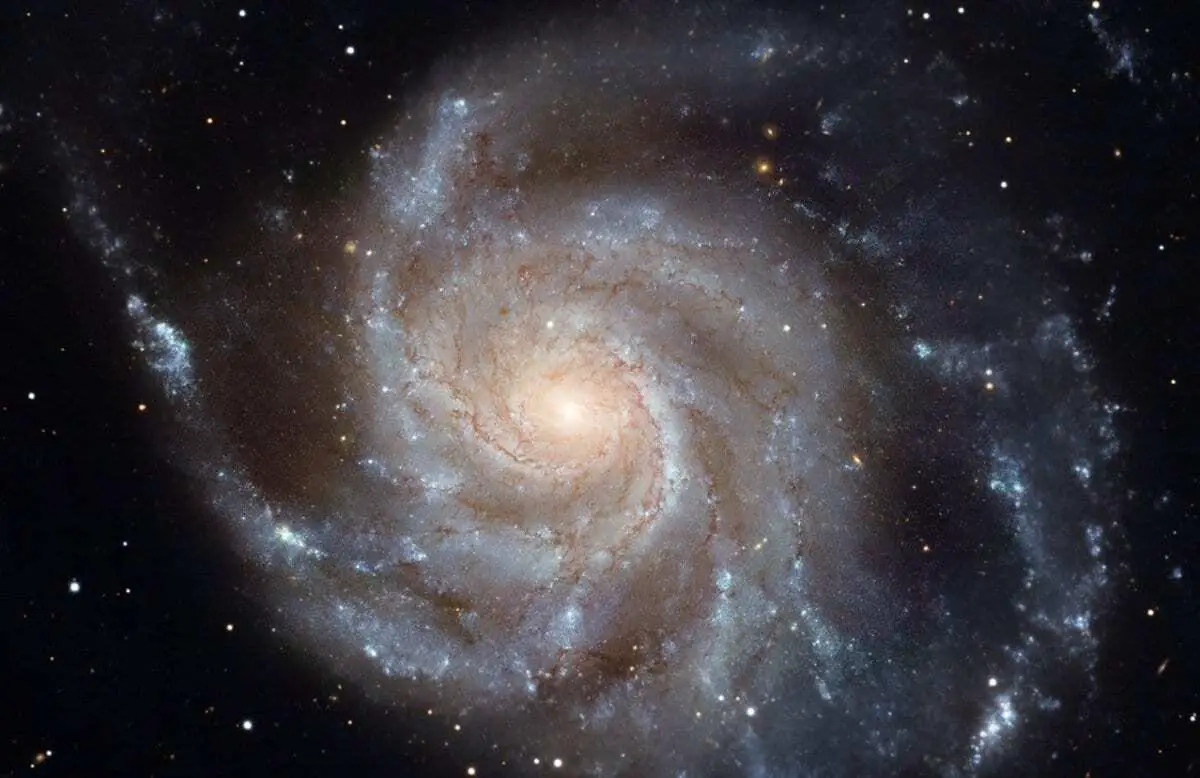In a first-of-its-kind analysis, Northwestern University astrophysicists have discovered that, contrary to previously standard lore, up to half of the matter in our Milky Way galaxy may come from distant galaxies.
As a result, each one of us may be made in part from extragalactic matter. The study, which required the equivalent of several million hours of continuous computing, will be published on July 27 in the journal Monthly Notices of the Royal Astronomical Society.
Using supercomputer simulations, the research team found a major and unexpected new mode for how galaxies, including our own Milky Way, acquired their matter: intergalactic transfer. The simulations show that supernova explosions eject copious amounts of gas from galaxies, which causes atoms to be transported from one galaxy to another via powerful galactic winds. Intergalactic transfer is a newly identified phenomenon, which simulations indicate will be critical for understanding how galaxies evolve.
“Given how much of the matter out of which we formed may have come from other galaxies, we could consider ourselves space travellers or extragalactic immigrants,” said Daniel Anglés-Alcázar, a postdoctoral fellow in Northwestern’s astrophysics centre, CIERA (Center for Interdisciplinary Exploration and Research in Astrophysics), who led the study. “It is likely that much of the Milky Way’s matter was in other galaxies before it was kicked out by a powerful wind, travelled across intergalactic space and eventually found its new home in the Milky Way.”
Galaxies are far apart from each other, so even though galactic winds propagate at several hundred kilometres per second, this process occurred over several billion years.
Prof Claude-André Faucher-Giguère and his research group, along with collaborators from the FIRE (“Feedback In Realistic Environments”) project, which he co-leads, had developed sophisticated numerical simulations that produced realistic 3D models of galaxies, following a galaxy’s formation from just after the Big Bang to the present day. Anglés-Alcázar then developed state-of-the-art algorithms to mine this wealth of data and quantify how galaxies acquire matter from the universe.
“This study transforms our understanding of how galaxies formed from the Big Bang,” said Faucher-Giguère, a co-author of the study and assistant professor of physics and astronomy in the Weinberg College of Arts and Sciences.
“What this new mode implies is that up to one-half of the atoms around us — including in the solar system, on Earth and in each one of us — comes not from our own galaxy but from other galaxies, up to one million light years away,” he said.
By tracking in detail the complex flows of matter in the simulations, the research team found that gas flows from smaller galaxies to larger galaxies, such as the Milky Way, where the gas forms stars. This transfer of mass through galactic winds can account for up to 50 percent of matter in the larger galaxies.
“In our simulations, we were able to trace the origins of stars in Milky Way-like galaxies and determine if the star formed from matter endemic to the galaxy itself or if it formed instead from gas previously contained in another galaxy,” said Anglés-Alcázar, the study’s corresponding author.
In a galaxy, stars are bound together: a large collection of stars orbiting a common centre of mass. After the Big Bang 14 billion years ago, the universe was filled with a uniform gas — no stars, no galaxies. But there were tiny perturbations in the gas, and these started to grow by force of gravity, eventually forming stars and galaxies. After galaxies formed, each had its own identity.
“Our origins are much less local than we previously thought,” said Faucher-Giguère, a CIERA member. “This study gives us a sense of how things around us are connected to distant objects in the sky.”
The findings open a new line of research in understanding galaxy formation, the researchers say, and the prediction of intergalactic transfer can now be tested. The Northwestern team plans to collaborate with observational astronomers who are working with the Hubble Space Telescope and ground-based observatories to test the simulation predictions.
Royal Astronomical Society (RAS)
Header Image – A close-up view of the Messier 101 galaxy, which is a spiral galaxy similar to the Milky Way galaxy. The Messier 101 has a pancake-like shape that we view face-on. This perspective shows off the spiral structure that gives it the nickname the “Pinwheel Galaxy.” Credit: NASA







